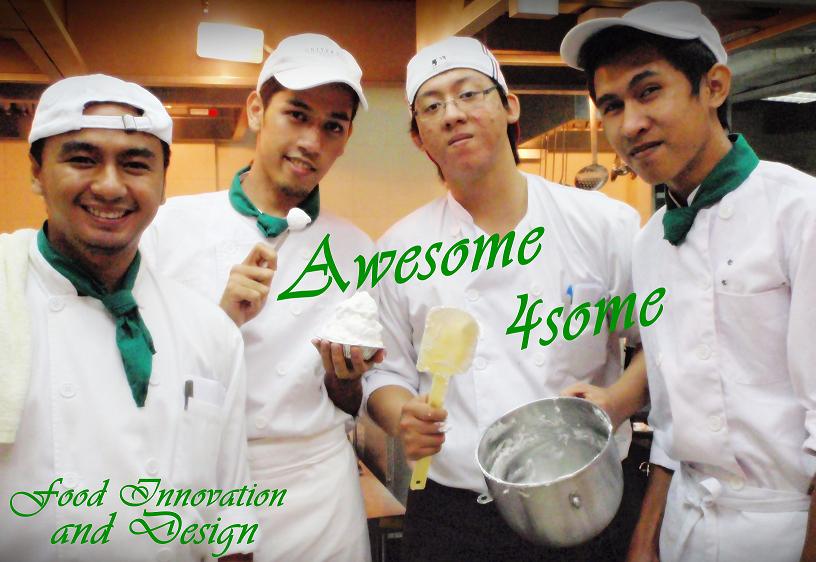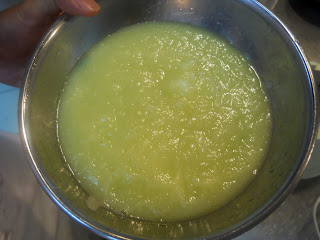This week we will be experimenting with fruits to make a fruit leather. As usual, different group different task.
The basic formula for making Fruit leather are:
2 cups variety of fruits (we used dragon fruit, kiwi, strawberry, peach, and apples)
25 gram sugar
*Note; Apple leather can be made using 5 apples, (peeled, cored, and pureed), 90 ml water, and 75 gram sugar.
For our group, we will be using green apples to make a fruit leather.
Before the task:
Before the task, Chef Zaid gave us some briefing before we start the mise-en-place. Right after the briefing is finished. We start to prepare our ingredients.
This are the ingredients.
During the task:
Right after the ingredients are ready. We started peeling and chopping the green apples.
Peeling the apples.
Remove the core and chop roughly
Put all the ingredients in a blender or a food processor and blend until it becomes a puree.
Pureed green apples.
*Right after we pureed it, we spread on a parchment paper that had been put on a tray.
Spread the puree evenly on a parchment paper
Put in the preheated oven (100 C) for approximately 2 hours
*For 2 hours of waiting. There's nothing much we can do. So we went out for a while.
After 2 hours. The fruit leather is 99.99% dried
Trying to pulling out the fruit leather. It is very delicate so we have to be very careful
Tada!! The fruit leather!
Chef Zaid inspecting our fruit leather.
It's our turn to test our fruit leather.
Ali is testing all fruit leathers.
*Click image to enlarge
That's all from us. Thank you!
Up up and away!
Pureed green apples.
*Right after we pureed it, we spread on a parchment paper that had been put on a tray.
Spread the puree evenly on a parchment paper
Put in the preheated oven (100 C) for approximately 2 hours
*For 2 hours of waiting. There's nothing much we can do. So we went out for a while.
After 2 hours. The fruit leather is 99.99% dried
Trying to pulling out the fruit leather. It is very delicate so we have to be very careful
Tada!! The fruit leather!
Close-up
After the task:
After all the fruit leather are dried. All of us tried to pull it off but some of it didn't succeed because the fruit leather is not totally dried.Chef Zaid inspecting our fruit leather.
It's our turn to test our fruit leather.
Ali is testing all fruit leathers.
*Click image to enlarge
That's all from us. Thank you!
Up up and away!





































